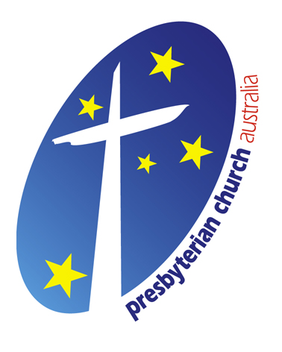Related Research Articles
Methodism, also called the Methodist movement, is a group of historically related denominations of Protestant Christianity whose origins, doctrine and practice derive from the life and teachings of John Wesley. George Whitefield and John's brother Charles Wesley were also significant early leaders in the movement. They were named Methodists for "the methodical way in which they carried out their Christian faith". Methodism originated as a revival movement in the Church of England in the 18th century and became a separate denomination after Wesley's death. The movement spread throughout the British Empire, the United States, and beyond because of vigorous missionary work, and today has about 80 million adherents worldwide.
The Wesleyan Church, also known as the Wesleyan Methodist Church and Wesleyan Holiness Church depending on the region, is a Methodist Christian denomination in the United States, Canada, the United Kingdom, South Africa, Namibia, Sierra Leone, Liberia, Indonesia, and Australia. The church is aligned with the Wesleyan-Holiness movement and has roots in the teachings of John Wesley. It adheres to Wesleyan-Arminian doctrine and is a member of the World Methodist Council.

The African Methodist Episcopal Zion Church, or the AME Zion Church (AMEZ) is a historically African-American Christian denomination based in the United States. It was officially formed in 1821 in New York City, but operated for a number of years before then. The African Methodist Episcopal Zion Church adheres to Wesleyan-Arminian theology.
The Primitive Methodist Church is a Methodist Christian denomination within the holiness movement. It began in England in the early 19th century, with the influence of American evangelist Lorenzo Dow (1777–1834).
The Wesleyan Methodist Church of Australia is a Christian denomination with its origins in Wesleyan Methodism. It is the organisational name for contemporary The Wesleyan Church in Australia.

The Presbyterian Church of Australia (PCA), founded in 1901, is the largest Presbyterian denomination in Australia. The larger Uniting Church in Australia incorporated about two-thirds of the PCA in 1977.
Pilgrim Holiness Church (PHC) or International Apostolic Holiness Church (IAHC) is a Christian denomination associated with the holiness movement that split from the Methodist Episcopal Church through the efforts of Martin Wells Knapp in 1897. It was first organized in Cincinnati, Ohio, as the International Holiness Union and Prayer League (IHU/IAHC). Knapp, founder of the IAHC, ordained and his Worldwide Missions Board sent Charles and Lettie Cowman who had attended God's Bible School to Japan in December 1900. By the International Apostolic Holiness Churches Foreign Missionary Board and the co-board of the Revivalist the Cowmans had been appointed the General Superintendents and the Kilbournes the vice-General Superintendent for Korea, Japan and China December 29, 1905. The organization later became the Pilgrim Holiness Church in 1922, the majority of which merged with the Wesleyan Methodists in 1968 to form the Wesleyan Church.

The Bible Christian Church was a Methodist denomination founded by William O’Bryan, a Wesleyan Methodist local preacher, on 18 October 1815 in North Cornwall. The first society, consisting of just 22 members, met at Lake Farm in Shebbear, Devon. Members of the Church were sometimes known as Bryanites, after their founder.

The Free Wesleyan Church of Tonga is a Methodist denomination in Tonga. It is the largest Christian denomination in the nation and is often mistaken to be its state church. It has its roots in the arrival of the first missionaries from the London Missionary Society and the ministry of the Wesleyan Methodist Mission Society, the latter of which cemented its Methodist identity.
United Methodist Free Churches, sometimes called Free Methodists, was an English nonconformist community in the last half of the 19th century. It was formed in 1857 by the amalgamation of the Wesleyan Association and the Wesleyan Reformers.

Wesley Church is a Uniting Church in the centre of Melbourne, in the State of Victoria, Australia.
Alfred Harold Wood OBE was a 20th-century Australian Christian minister, educator, writer, hymnologist and advocate of church union.

Yirrkala is a small community in East Arnhem Region, Northern Territory, Australia, 18 kilometres (11 mi) southeast of the large mining town of Nhulunbuy, on the Gove Peninsula in Arnhem Land. Its population comprises predominantly Aboriginal Australians of the Yolngu people, and it is also home to a number of Mission Aviation Fellowship pilots and engineers based in Arnhem Land, providing air transport services.

The Evangelical Methodist Church (EMC) is a Christian denomination in the Wesleyan-Holiness tradition headquartered in Indianapolis, Indiana. The denomination reported 399 churches in the United States, Mexico, Burma/Myanmar, Canada, Philippines and several European and African nations in 2018, and a total of 34,656 members worldwide.
The Evangelical Church of North America (ECNA) is a Wesleyan-Holiness, Protestant Christian denomination headquartered in Clackamas, Oregon. As of 2000, the Church had 12,475 members in 133 local churches. The Church sponsors missionaries in seven countries.
Jabez Bunting Waterhouse was an English-born Australian Methodist minister and a leading legislator within Methodist conferences.
Narritjin Maymuru was a Yolngu people artist and activist noted for Bark painting. He began painting in the 1940s after time as a cook. After decades of work in 1979 he, and his son, became visiting artists at the Australian National University. HIs daughter Galuma Maymuru has become recognised as a significant Australian artist.

Cecil Frank Gribble was an Australian Christian minister who was President General of the General Conference of the Methodist Church of Australasia 1964–1966.

UnitingWorld is the international aid and partnerships agency of the Uniting Church in Australia, based in Sydney Australia.
Gawirrin Gumana (1935–2016) was an important cultural leader of the Yolngu people and an Aboriginal Australian bark painter known for his use of rarrk.
References
- ↑ "Methodist Church of Australasia". The Sydney Morning Herald . National Library of Australia. 1 January 1902. p. 5. Retrieved 28 January 2016.
- 1 2 3 Eric G. Clancy (September 2002). "Methodist Leaders: The Presidents General of the General Conference of the Methodist Church of Australasia, 1902-1977" (PDF). Church Heritage. United Theological College. Archived from the original (PDF) on 16 March 2015. Retrieved 3 February 2018.
Originally published in Church Heritage, 12, 4 (September 2002), pp. 224-242
- 1 2 "Revealing the activities of the Methodist Missionary Society through film". ALIA Library. 20 June 2022. Retrieved 7 June 2023.
- 1 2 "Methodist Missionary Society of Australasia - Summary". Find & Connect. 26 November 2020. Retrieved 3 June 2023.
- ↑ "Methodist Overseas Mission - Summary". Find & Connect. 7 November 2018. Retrieved 3 June 2023.
- 1 2 Morphy, Howard (2005). "Mutual conversion?: The methodist church and the Yolngu, with particular reference to Yirrkala". Humanities Research. ANU Press. IX (1): 41-53. Retrieved 7 June 2023. PDF